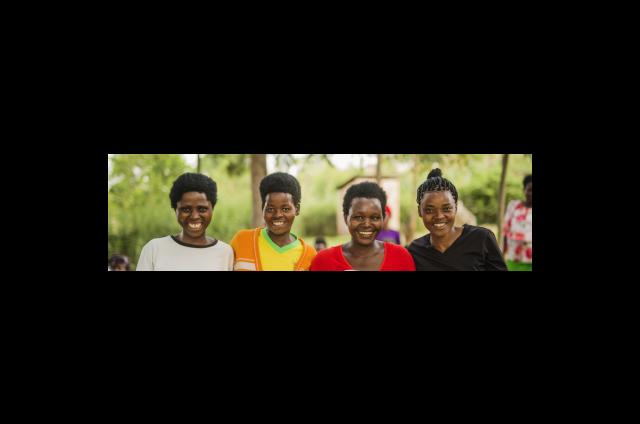Delivering The Global Goals 2020
Goal 1: No Poverty
End poverty in all its forms everywhere.
14% of women report earning at least $1.90 a day
Target 1.1 eradicate extreme poverty (people living on less than $1.25 a day).
Afghanistan is one of the poorest countries in the world. We specifically target the most marginalised women for our programme. We can see from this data that almost all of the women (even more than last year) who entered our programme in 2020 were living in poverty, and while by endline only 14% report personal earnings over at least $1.90 a day, it is still a 367% increase which is very encouraging, especially in this fragile context they are living in.
*$1.90 a day is the international extreme poverty line set by the World Bank
Goal 1: No Poverty
End poverty in all its forms everywhere.
44% of women participants report saving a portion of their earnings
Target 1.5: By 2030, build the resilience of the poor and those in vulnerable situations and reduce their exposure and vulnerability to climate-related extreme events and other economic, social and environmental shocks and disasters.
For the women we serve, our programme is the first time they are in control of an amount of their own money (through earnings or stipend). Our programme supports women to learn good savings habits and mechanisms for saving in order for women to move away from hand-to-mouth financial management.
This is especially important in Afghanistan where the majority of women are charged with household financial management (for example, buying food for their family) and are learning how to save even on an incredibly low income.
Goal 2: Zero Hunger
End hunger, achieve food security and improved nutrition and promote sustainable agriculture
82% of women graduates report no food shortage in the last 4 weeks
Target 2.1 By 2030, end hunger and ensure access by all people, in particular the poor and people in vulnerable situations, including infants, to safe, nutritious and sufficient food all year round.
Food security is a key indicator of wellbeing and decreasing poverty. Food security is not just about having access to enough food but also nutritious food. Nutrition is a key part of our training, supporting women and their family’s health and well-being.
Upon graduating from our year-long programme, 82% of women reported having sufficient food in the house in the last four weeks compared to 63% at enrolment.
Goal 3: Good Health and Wellbeing
Ensure healthy lives and promote well-being for all, at all ages.
61% of women participants report practising family planning
Target 3.7 By 2030, ensure access to sexual and reproductive health-care services, including family planning, information and education.
61% of women on our programme in Afghanistan reported sometimes or frequently practising family planning at graduation compared to 46% at enrolment.
In the conservative communities where we work women are denied influence over decision-making including over their own bodies. Women practising family planning is a key indicator of women having more awareness and influence over their own bodies.
Goal 4: Quality Education
Ensure inclusive and equitable quality education and promote lifelong learning opportunities for all.
45% of school-aged girls (5-17 years) in school
TARGET 4.1: By 2030, ensure that all girls and boys complete free, equitable and quality primary and secondary education leading to relevant and effective learning outcomes.
Women graduates of our programme in Afghanistan reported that 45% of girls were in school compared to 40% at enrolment.
Goal 5: Gender Equality
Achieve gender equality and empower all women and girls.
75% INCREASE IN PERCEIVED SELF-EFFICACY OF WOMEN PARTICIPANTS
TARGET 5.1: By 2030, end all forms of discrimination against all women and girls everywhere.
Women gaining confidence is central to their empowerment, believing in themselves and their abilities to participate, succeed, engage and create change for themselves, their facilities and communities. It is also a positive sign of recovery from trauma and isolation. Using a set of questions commonly used in women’s empowerment research studies, we present self-efficacy as a score on a scale of 0-1, where 1 indicates the highest possible level of self-efficacy.
The perceived self-efficacy of the women on our programme in Afghanistan has increased on graduation, from 0.44 on average to 0.70 on a scale of 0-1.
Goal 5: Gender Equality
Achieve gender equality and empower all women and girls
97% of women report being involved in decisions about having more children
TARGET 5.6: By 2030, Ensure universal access to sexual and reproductive health and reproductive rights as agreed in accordance with the Programme of Action of the International Conference on Population and Development and the Beijing Platform for Action
In the conservative communities where we work, women are denied influence over decision-making – including over their own bodies. Our data highlights an important shift in women’s voices being heard in decision-making which should also lead to positive changes in wellbeing.
In the past we have found that women did not necessarily appreciate the relevance of this specific indicator at baseline. However, we found that at endline the indicator was more applicable to them. Our M&E team has then improved women’s understanding at both points of data collection, hence why we are now seeing increases this year.
Goal 8: Decent Work and Economic Growth
Promote inclusive and sustainable economic growth, employment and decent work for all
15% of women report employment
TARGET 8.3 Promote development- oriented policies that support productive activities, decent job creation, entrepreneurship, creativity and innovation, and encourage the formalisation and growth of micro-, small and medium-sized enterprises
Women face multiple barriers to accessing employment. For example, in Afghanistan, attitudes in communities favour men working with women expected to stay at home to cook, clean and look after the children. Yet women’s employment is critical to their economic opportunities.
On graduation of our programme, 15% of women reported employment across all occupation levels compared to 4% at enrolment. Given the context of COVID-19 last year, this increase is still impressive considering more women were still able to gain and maintain employment by graduation.
Goal 16: Promote just, peaceful and inclusive societies
Promote peaceful and inclusive societies for sustainable development, provide access to justice or all and build effective, accountable and inclusive institutions at all levels.
37% of women have spoken publicly against abuse of women
16.1 By 2030, significantly reduce all forms of violence and related death rates everywhere.
Conflict and poverty increase women’s vulnerability to all forms of violence, with violence acting as both a consequence and a driver of discrimination with women surviving violence being more vulnerable to further abuse.
37% of graduates of our programme in Afghanistan reported publicly speaking out against abuse of women compared to 2% at enrolment.
Goal 16: Peace, Justice and Strong Institutions
Promote peaceful and inclusive societies for sustainable development, provide access to justice or all and build effective, accountable and inclusive institutions at all levels.
31% of women discussed community issues with other women in community
16.7 Ensure responsive, inclusive, participatory and representative decision-making at all levels.
Women’s engagement with groups in their community demonstrates women’s increasing participation. Informal networks are key for providing social and economic support as well as group decision-making skills through elections of committees to manage the group.
The percentage of women who discussed issues with other women in their community increased by 287% from 8% at enrolment with 31% at graduation.


